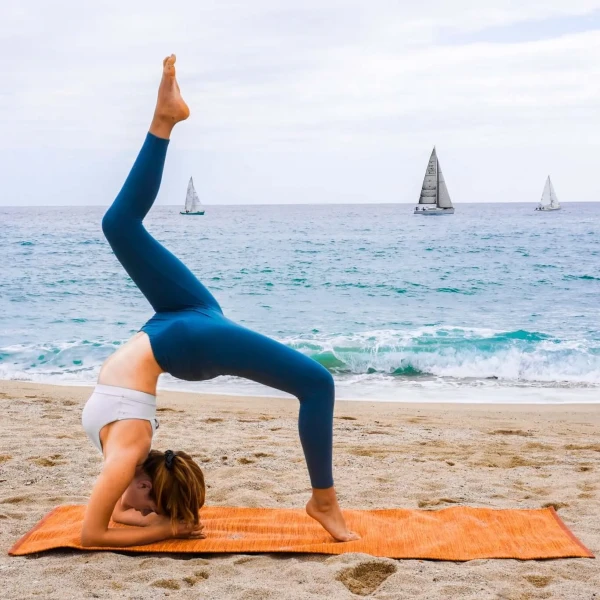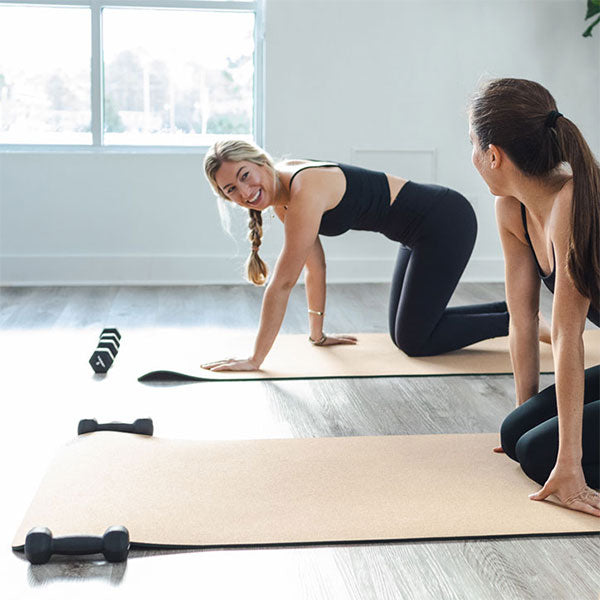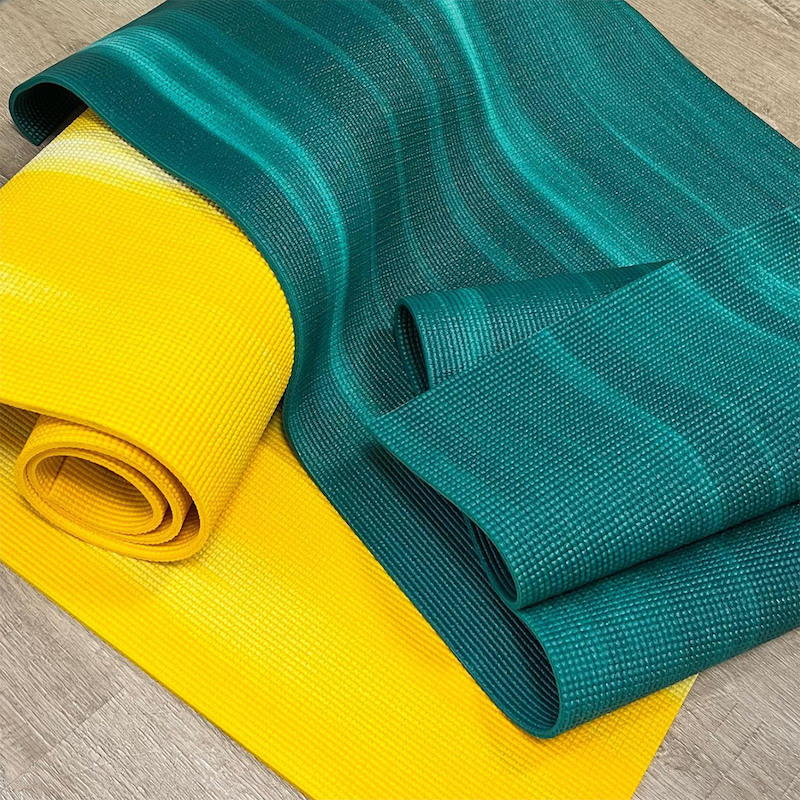Understanding the Source of Chemical Smells in Yoga Mats
Why does my yoga mat smell like chemicals? When you unroll a new yoga mat, you might notice a strong smell. This is common and comes from the materials used to make the mat. Let’s explore why this happens and what materials contribute to the smell.
The Role of Manufacturing Materials
Most yoga mats include materials like PVC, rubber, or foam. These materials can release odors when they are new. The smell is not harmful, but it can be unpleasant. The odors are a result of the manufacturing process. During production, chemicals are used, and these can linger on the mat.
How New Yoga Mats Emit Odors
After production, yoga mats are packed and shipped. The smell builds up during this time. When you first use the mat, you might smell these chemicals. This is because the mat is off-gassing, which means it is releasing chemicals into the air. This smell should decrease with time and use.
Step-by-Step Guide to Neutralize New Yoga Mat Smell
If your new yoga mat is emitting a strong chemical scent, don’t worry. Follow this guide to reduce and eventually remove the odor, ensuring a more pleasant yoga experience.
Assessing the Severity of Smell in Your Yoga Mat
Start by unrolling your mat and sniffing it. Is the smell mild or strong? This will determine how aggressively you need to treat the odor.
Natural Air-Out Methods for Odor Reduction
Let your mat sit outdoors for some fresh air and sunlight. This helps reduce odors naturally over time. Make sure the weather is dry.
DIY Odor-Busting Solutions and Sprays
Create a homemade cleaner with equal parts water and apple cider vinegar. Add a few drops of essential oil for extra scent and spray it on your mat. Wipe it down gently.
Using Commercially Available Yoga Mat Washes
If DIY isn’t your style, buy a yoga mat cleaner. Brands like Gaiam offer sprays formulated to combat new mat smells quickly and effectively.
The Science Behind Yoga Mat Odors
Understanding what causes your yoga mat to develop those peculiar odors is key to combatting them. Let’s unpack the mysteries behind the smells.
Sweat and Bacteria: Unveiling the Real Culprits
Contrary to popular belief, the sweat itself isn’t what smells. What does, however, are the bacteria that thrive in the damp and warm environments where sweat resides. These tiny organisms feed on the sweat and produce the foul odors we associate with a smelly mat.
The Effects of Gym Environment on Your Mat
Yoga mats are often used in gyms where the environment can be warm and humid. These are ideal conditions for bacteria and odor to flourish. Thorough cleaning and proper storage are vital to keeping your yoga mat fresh.
Material Matters: The Impact on Smell Retention
The type of material your yoga mat is made from can significantly affect its tendency to retain smells. Natural materials like cork or cotton may resist bacteria better than synthetic options like PVC or foam. When selecting a mat, consider opting for one that contains anti-microbial properties to help minimize odors from the start.
Effective Cleaning Techniques for Different Mat Types
When it comes to yoga mats, not all materials are the same. Each type requires specific cleaning techniques to maintain its quality while eliminating smells.
Tips for Cleaning Natural Material Mats
Natural material mats, such as those made from cotton or jute, benefit from gentle cleaning methods. For these mats, avoid harsh chemicals. Use a soft cloth dampened with water and mild soap. Gently scrub the mat in a circular motion. Rinse with water and air dry. If odors persist, a light spritz of water and vinegar solution can help. Be sure to let the mat dry completely in a well-ventilated area before rolling it up.
Best Practices for Synthetic and Foam Mat Maintenance
Foam mats and those made from synthetic materials like PVC often hold odors more readily. These mats can handle a more robust cleaning approach. Use a spray bottle to apply a mix of water and gentle detergent. Wipe firmly with a microfiber towel to remove dirt and sweat. For persistent chemical smells, consider using a specifically designed yoga mat cleaner. These are formulated to break down odors without damaging the mat. After cleaning, lay the mat flat to dry thoroughly before storing to prevent mildew and preserve the mat’s integrity.
Preventing Yoga Mat Smells from the Start
Preventing smells in your yoga mat starts when you buy it. Choose materials known for low odor emissions and with anti-microbial properties. Here’s what to consider:
Selection Criteria for Low-Odor Yoga Mats
- Opt for yoga mats made of natural materials like cork, rubber, or cotton.
- Look for labels saying ‘low-odor’ or ‘non-toxic’. These mats have fewer chemicals that cause smells.
- Consider the thickness of the mat. Thicker mats might hold more smell.
Benefits of Anti-microbial Mat Materials
- Anti-microbial mats resist bacteria growth. This keeps your mat fresher.
- Such materials often need less frequent cleaning.
- They can extend the life of your yoga mat by preventing breakdown from bacteria.
When you pick a yoga mat, remember these tips. They can save you from smelly workout sessions in the future.
Caring for Your Yoga Mat
Taking care of your yoga mat properly can extend its life and keep it fresh. Here are some simple but effective ways to maintain its condition and prevent the reoccurrence of chemical odors.
Proper Cleaning and Maintenance Routines
Regular cleaning is key to keeping your yoga mat in top shape. After each use, wipe it down with a damp cloth. For deeper cleaning, use a mix of water and gentle soap. For natural mats, a water and vinegar solution can help. Dry your mat completely after washing. Roll it up loosely to avoid creases and store in a cool, dry place.
The Do’s and Don’ts of Yoga Mat Care
Do rinse your mat with fresh water if it gets too salty from sweat. Don’t use harsh chemicals; they can damage the mat. Do air out your mat often, keeping it free from moisture and bacteria growth. Avoid leaving it in direct sunlight for too long, as this can cause fading and wear. Finally, don’t store your mat wet or folded; always let it dry and roll it rightly before tucking it away.
Conclusion
If your yoga mat smells like chemicals, it’s likely due to the materials and manufacturing processes used to create the mat. Many yoga mats are made from synthetic materials like PVC (polyvinyl chloride), TPE (thermoplastic elastomers), or EVA foam, which can emit a chemical odor, especially when new. This odor is often caused by volatile organic compounds (VOCs) that are released as gases from these materials.
New yoga mats, especially those made from PVC or other synthetic materials, can release VOCs. These compounds are part of the manufacturing process and can cause a strong chemical smell. Over time, this smell should diminish as the VOCs off-gas. Unroll your mat and let it air out in a well-ventilated area for a few days. This will help the VOCs dissipate faster. Some mats can be washed with mild soap and water. Check the manufacturer’s instructions to ensure it’s safe to clean your specific mat. If the smell persists for an extended period or if it causes discomfort or irritation, you may want to consider replacing the mat or choosing one made from materials that are less likely to emit strong odors.







































